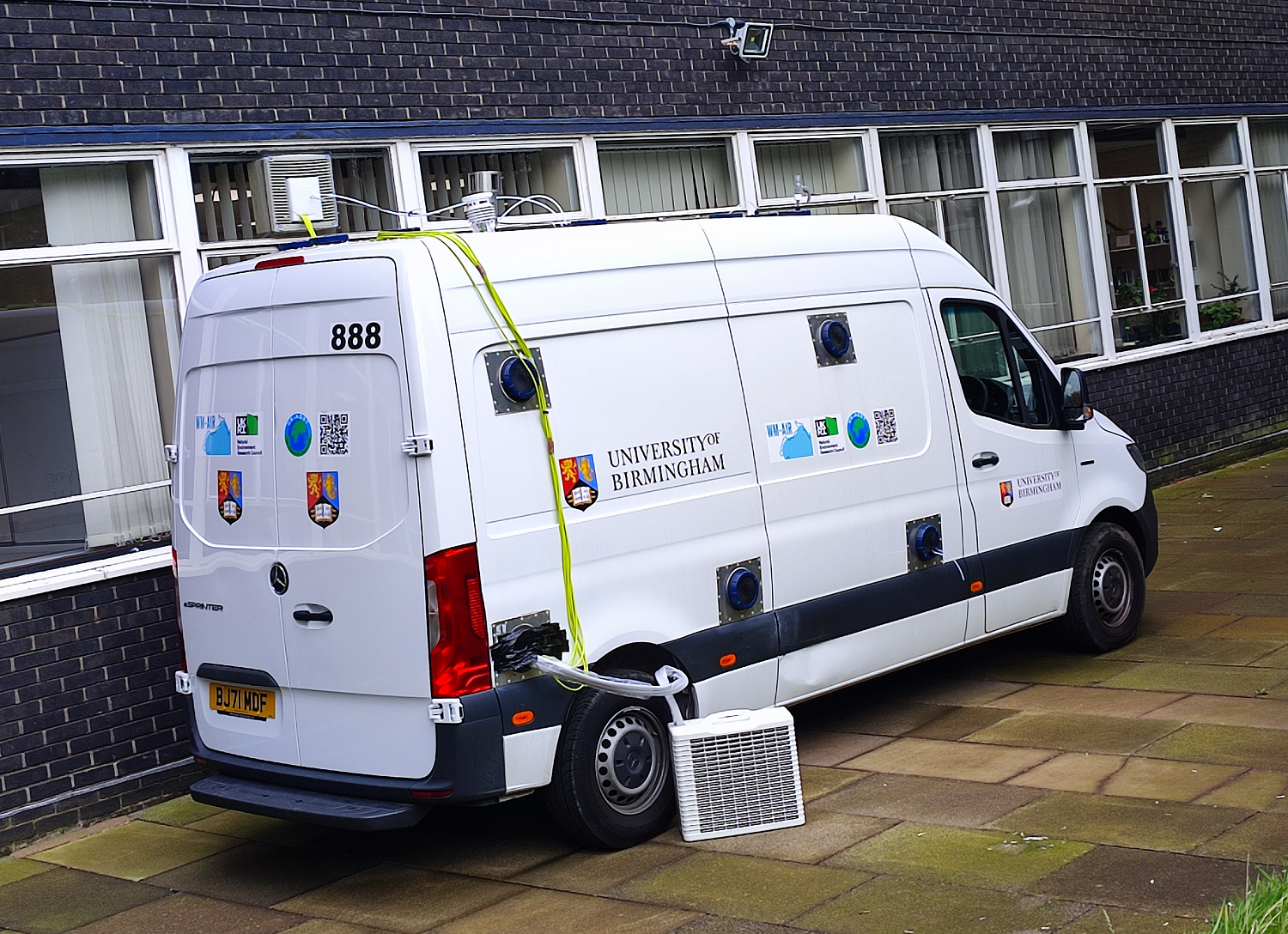Professor Zongbo Shi
z.shi@bham.ac.uk
+44 (0) 121 4149128
Not applicable
Calendar

Mobile Air Quality Supersites
As a service to the wider community, the AMOF website “showcases” facilities that are not operated or supported by AMOF.
This is not an AMOF Observatory please do not apply to AMOF for access.
Mobile Air Quality Supersites
Two Mobile Air Quality Supersites (an electric Mobile van and a fully refurbished container) were established in 2021 as part of the UK air quality supersite triplets. This is funded by NERC under the capital call to the Universities of Birmingham and Manchester, Imperial College London, Aston University, Cranfield University and Coventry University.
The mobile supersites provided advanced monitoring capabilities to understand the sources and processes of air pollution. The supersites are not traditional monitoring stations – they will comprise highly sophisticated instruments which monitor key species in atmospheric processes such as ammonia (key to aerosol formation), VOCs (key to ozone, secondary organic aerosol and new particle formation), as well as trace metals, nanoparticles and particle composition in near-real time, in addition to regulated gas pollutants. By pairing with an urban background site, not only can urban and roadside concentration increments be measured, the processing of polluted air to form key secondary pollutants such as nitrate and secondary organic particles, and freshly formed nanoparticles can be viewed in unprecedented detail to yield process understanding. These mobile supersites can also be deployed flexibly across the UK or overseas.
Location
The mobile electric van and the container are usually located at the University of Birmingham campus.
Instrumentation for continuous measurements
- Quadropole Aerosol Chemical Speciation Monitor (Q-ACSM) (Aerodyne Research): Measures PM5 chemical composition including organics, nitrate, sulfate, ammonium and chloride with 30 min time resolution.
- Xact ambient metals monitor (XACT 625i): Near real-time concentrations of up to 46 elements with an atomic number between Aluminium (Al) and Uranium (U) at a time resolution ranging between 15 minutes and 4 hours.
- Aethalometer (Magee Scientific AE33): Real-time measurement of black carbon (BC) at a time resolution of 5 min. Absorption optical analysis at seven wavelengths from 370 nm to 950 nm.
- FIDAS 200: Measures real-time PM5 and PM10 mass concentrations. In addition, PM1, PM4, PMtot, the particle number concentration, and the particle size distribution.
- Scanning Mobility Particle Sizer (Grimm SMPS+C 5420): Measures real-time particle size distribution for size range (5-350 nm)
- Proton Transfer Reaction-Time of Flight-Mass Spectrometer (PTR-ToF-MS) (Ionicon PTR-TOF 1000): Measures real-time volatile organic compounds.
- Gas Analyzers (Time resolution: 1min)
- Thermo Scientific 42iQ; NO, NO2, NOx analyzer
- Thermo Scientific 48i CO analyser
- Thermo Scientific 49i Ozone analyser
- Thermo Scientific 43iQ Sulfur Dioxide analyser
- LGR Ammonia analyzer
